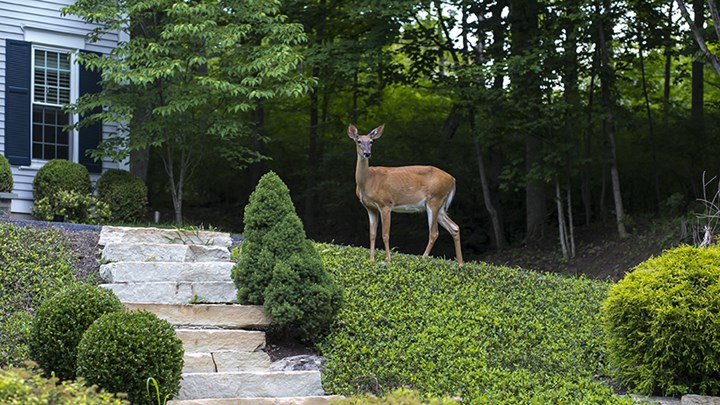
by Tom Keer - Saturday, April 6, 2019

I just finished reading A.J. Derosa’s book “The Urban Deer Complex,” which discusses how deer living in suburban areas adjust and change their behavior. Essentially, suburban deer are accustomed to the everyday affairs of humans and are not spooked by sirens or other loud noises. Backfiring cars are as normal to these deer as the roses and tulips they eat in residential gardens. The book details a fascinating approach relevant to whitetail hunters living in the suburbs. Before you snub the ideas presented, keep in mind that poorly-planned urban sprawl and over-development created this situation. Suburban deer hunting isn't for everyone, but if your job brings you to the city, it may be your only option.
It’s true—there are corker animals harvested in suburban areas like the 210-inch, 16-point non-typical killed outside Boston, Mass., in 2004. The problem was that the tremendous whitetail was hit by a car, not an arrow. If that deer had been harvested by a fair-chase hunter, it would be one for all time. For this reason, some hunters are willing to sit in a stand located in a strip of land between shopping malls—and they do so for good reason.
Most of us hunters head for the open space found in woods and fields. We prefer a traditional hunt where deer feed on a combination of hard and soft mast, clover or corn. We enjoy the relative predictability of whitetail behavior patterns regarding bedding, travel, feeding and breeding zones. The solitude of the woods and fields sharpens our focus, the smell of freshly cut corn invigorates us and we do our best to quiet the crunch of dried leaves underfoot.
Time marches on, and with that comes land that naturally matures over time. But poorly managed rural land can be as devoid of life as the concrete and asphalt of a suburb. Things were much different in the past. One hundred years ago farmers cleared fields. When they traded farm life for work in the city, a wonderful process began. Their fields grew up and for the next few decades birds and small game thrived in the primary growth. Eventually, the woods matured and bird and small game numbers decreased and were replaced by big game animals. It seemed that when the land was about to go completely barren, a lightning strike set the wilderness forest ablaze and the process began again. Even if there were no fire, regular timber harvests reoriented the process.
But farms don't spring up like they once did. In fact, more are sold off each year. Fire is feared largely due to rural areas becoming increasingly settled, therefore fires ultimately put lives and homes at risk. Even the domestic logging industry is minimized. For example, all the lumber I bought last week to build a deck was from Canada.
While many changes have occurred in the past century, not all are negative. For example, conservation and hunting groups serve a valuable purpose in our modern world. Some, such as the National Rifle Association (NRA), keep their fingers on the pulse of public land issues, serve as watchdogs and call the rest of us to engage. Others are excellent land stewards, using science and biology to reclaim land and improve wildlife habitat—breeding, feeding and resting zones are engineered where waterfowl, big-game and small-game animals thrive. Some focus on water quality issues and improvements that provide these animals with cold, clean drinking water; others improve fish populations.
Sure you can scout harder and find new places to hunt. You can hunt in the suburbs as many Americans now do. But in my opinion, spending some time with a conservation group to help keep land open and properly managed is the best way to go. If done right, a 210-inch, 16-point non-typical whitetail may cross your path, and it'll be in the wilderness instead of on a highway. Outstanding hunting opportunities in remote, wilderness areas is what we all want. We just need to work together to get there.
About the Author:
Tom Keer is an award-winning writer, photographer, columnist and editor who lives on Cape Cod, Massachusetts. He is the founder of The Keer Group, a marketing and public relations company that focuses on the vertical sports of hunting and fishing. He is a senior editor and columnist for Sporting Classics magazine, and edited USA Today's Hunt & Fish magazine for several years. Keer writes regularly NRA Hunters' Leadership Forum and for over a dozen outdoor magazines, including Field and Stream and Outdoor Life. When he and his family aren't hunting behind their four English setters you'll find them in the turkey woods, a duck marsh or in a goose pit. Visit him at www.thekeergroup.com or at www.tomkeer.com.
Follow NRA Hunters' Leadership Forum on Twitter @HuntersLead.
E-mail your comments/questions about this site to:
[email protected]
Proudly supported by The NRA Foundation and Friends of NRA fundraising.
